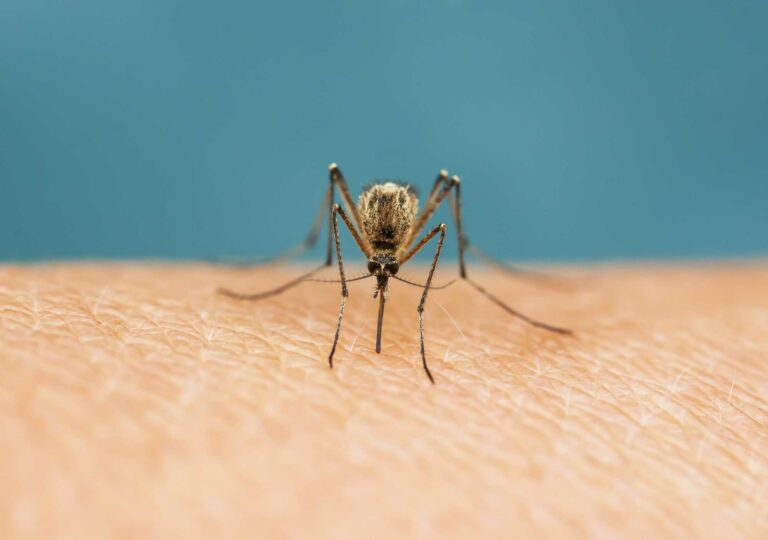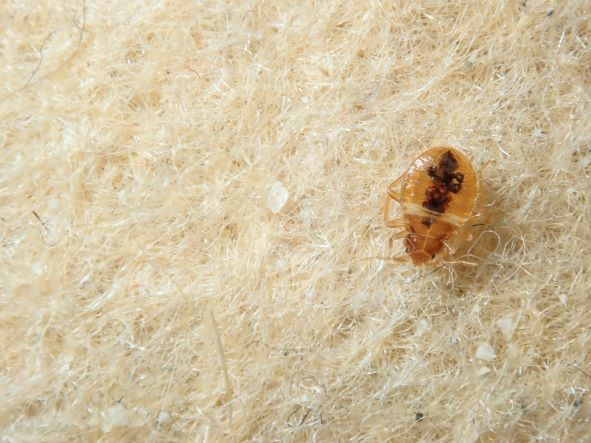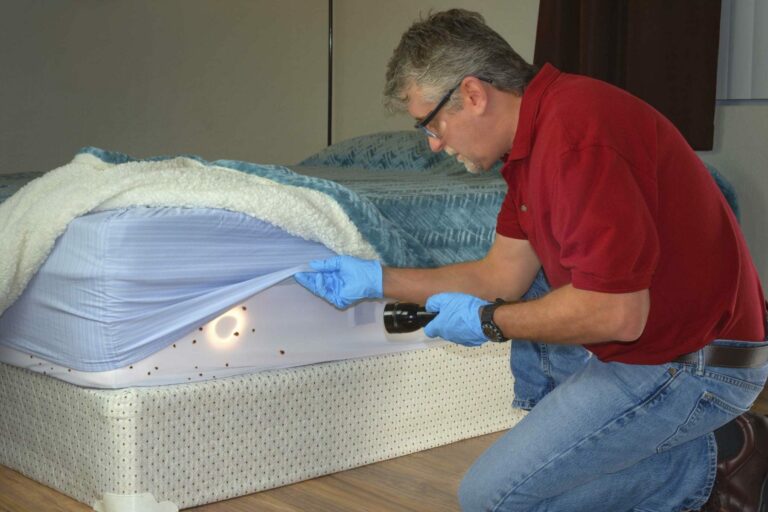Think Twice Before Using Pesticides for Bed Bug Control
With more than 300 EPA registered pesticides in market, it can be difficult to decipher which will essentially eliminate your bed bug problem the first round without damaging your property. Although most are able to be used by your everyday consumer, some are only for use by professional.
There are seven chemical classes that these products fall within and and used by many bed bug exterminators. They remove bed bugs in many different forms and have many varias consequential actions that follow. When looking into different pest control companies, it is important to know what process and chemicals are being used in your home and ask yourself….
Is this safe for my family and pets?
How many treatments will have to be done?
Will this damage my property?
Will this remove all of the bed bugs?!
The following are descriptions for the chemical classes for commonly used products for bed bug extermination with details containing information on how it eliminates bed bugs and important concerns involved with using them.
Desiccants
More commonly known as Diatomaceous Earth or Boric Acid, desiccants work by “drying out” the bed bug. Once you spread the product across affected areas, the bed bugs walk across it, and the chemical essentially destroys the exoskeleton, leaving the bed bug to dehydrate and die. Because it is more of a physical process, bed bugs cannot because resistant.
Warnings
There are different grades of desiccants and it is critical that the correct one is used and labeled for pest control. Other grades and if used in the wrong proportion, pose a serious risk to your respiratory system as you are essentially inhaling tiny shards of sharp minerals.
It is also important to consider that your bed bug issue will not be eliminated right away. Since bed bug eggs are not yet moving and are unable to come in contact with desiccants until they are alive, it takes a minimum of 7-15 days for it to be truly effective. If you want to learn more about Diatomaceous Earth and its effect on bed bugs, visit the article: Diatomaceous Earth: Does it Get Rid of Bed Bugs?
Pyrethrins and Pyrethroids
 The most commonly used compound to control indoor pest and bed bugs is pyrethrins and pyrethroids. Pyrethrins are botanical insecticides that come from chrysanthemum flowers. They can be commonly found in Australia and Africa. They alter nerve function, causing the bed bug to become paralyzed and eventually die. Pyrethroids are synthetic chemical insecticides whose chemical structures are adjusted from the chemical structures of the pyrethrins and act in a similar way to pyrethrins.
The most commonly used compound to control indoor pest and bed bugs is pyrethrins and pyrethroids. Pyrethrins are botanical insecticides that come from chrysanthemum flowers. They can be commonly found in Australia and Africa. They alter nerve function, causing the bed bug to become paralyzed and eventually die. Pyrethroids are synthetic chemical insecticides whose chemical structures are adjusted from the chemical structures of the pyrethrins and act in a similar way to pyrethrins.
These compounds force the bed bugs out of their hiding places and exterminate them, IF there is no resistant bed bug strain present.
Warnings
When using these compounds, it can flush the bed bug population out of hiding, which will eventually lead to their removal, but it can also cause some to escape and hide in a new place. Thus allowing your bed bug population to grow all over again. When this happens it can be often blamed on the fact that some bed bug populations have developed a strain that makes them resistant to these compounds.
Pyrroles
In efforts to battle the resistance of pyrethrins and pyrethroids, the compound Chlorfenapyr, the only registered pyrrole, has been used in the pest control field in place of those compounds. It is a pro-insecticide, which means it is not active until it is inside of the bed bug. The chemical disrupts specific functions in their cells, essentially causing its death.
Warnings
According to Entomology Today, researchers have found that several bed bug populations showed resistance to the chemical and have deemed bed bugs to be the most difficult pest to remove due to their resilience. Due to its newer introduction into the pest control field, studies are still being conducted on bed bugs resistance toward this chemical class.
Biochemicals
 The only biochemical registered for pest control use against bed bugs is Cold Pressed Neem Oil. Pressed directly from seeds of the Neem tree, a tropical evergreen tree found in Southeast Asia and Africa, its contains numerous compounds, such as the active ingredient Azadirachtin, that have medicidal and insecticidal components. It can be found in toothpaste, soaps, and other hygiene products. It is also found in over 100 pesticide products. It works by reducing insect feeding and reproduction and acts as more of a repellant.
The only biochemical registered for pest control use against bed bugs is Cold Pressed Neem Oil. Pressed directly from seeds of the Neem tree, a tropical evergreen tree found in Southeast Asia and Africa, its contains numerous compounds, such as the active ingredient Azadirachtin, that have medicidal and insecticidal components. It can be found in toothpaste, soaps, and other hygiene products. It is also found in over 100 pesticide products. It works by reducing insect feeding and reproduction and acts as more of a repellant.
Warnings
Because it serves as more of a repellent than an extermination technique, it is not found to be a one-stop-shop for bed bug control. It will slow down the rate for which your population grows, but will not serve to remove them in a relevant time frame. It also has been found to cause harm to cats, overexposure including symptoms of sluggishness, excessive salivation, trembling, and convulsions [NPIC].
Insect Growth Regulators
Insect Growth Regulators (IGRs) are a popular pest control chemical due to its prolong effect and low toxicity level. There are various types of insect growth regulators that alter the bed bug growth cycle in different ways. They either alter the bed bug’s development into a mature adult or alter the production of chitin, which is the compound a bed bug uses to develop their exoskeleton, which is needed for hydration. Others cause hypering development and some to stop development altogether.
Warnings
IGRs are not intended to kill quickly. They are often combined with other fast-acting pesticides which can lead to other consequential actions and they have been proven to not stop a population completely. According to studies conducted by the Department of Entomology at Virginia Tech, growth regulators doe not sterilize bed bugs. It causes them to exterminate shortly after or during the process of molting to adulthood. Unfortunately, some bed bugs survive the final molt and are able to feed, therefore are able to mate and lay eggs even if they die shortly after.
So the new question is,
Why risk using pesticides when you could do a bed bug heat treatment?
 Here at Bed Bug BBQ in Cleveland, OH, we pride ourselves on getting rid of all bed bugs in a non-chemical method of extermination, a bed bug heat treatment. This involves our experts bringing equipment to raise the temperature of your home to 118°F (48°C) or immediately at 122°F (50°C) for 90 minutes or more to kill bed bugs, including eggs and nymphs. This is all done in one single day and causes no damage to your home or property. Do not concern yourself with the risks of pesticides, get rid of all your bed bugs by calling Bed Bug BBQ today at (216) 232-2762.
Here at Bed Bug BBQ in Cleveland, OH, we pride ourselves on getting rid of all bed bugs in a non-chemical method of extermination, a bed bug heat treatment. This involves our experts bringing equipment to raise the temperature of your home to 118°F (48°C) or immediately at 122°F (50°C) for 90 minutes or more to kill bed bugs, including eggs and nymphs. This is all done in one single day and causes no damage to your home or property. Do not concern yourself with the risks of pesticides, get rid of all your bed bugs by calling Bed Bug BBQ today at (216) 232-2762.
Not sure if you have bed bugs? We also offer a FREE inspection! Contact us today.
If you want to learn more about the differences between using a heat treatment and pesticides, read the following: Killing Bed Bugs: Heat vs Chemical







